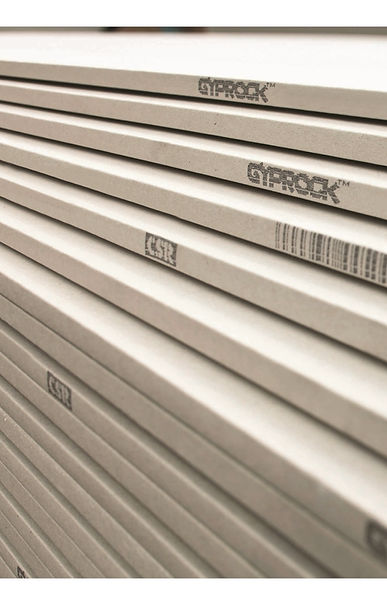
Plasterboard
Plasterboard is an internal wall and ceiling lining board, used in residential and commercial lightweight framed construction. It is one of the most common building products used in Australia.
Plasterboard basics
Plasterboard is made using compressed gypsum wrapped inside heavy duty lining paper. The gypsum is combined with a foaming agent to get a wet plaster mix which is then dried in a kiln once it has been lined with paper.
Plasterboard sheets are installed by fixing them to timber or steel frames using stud adhesive and screws or nails. Sheets come in a range of sizes however 1200mm is a common size as it suits the standard 600mm stud spacing used in most housing today.
When to use plasterboard
Standard plasterboard can be used in most residential and commercial building applications for constructing both walls and ceilings.
Standard plasterboard is not suitable for use in high heat areas. It is not safe to use plasterboard in areas with a temperature higher than 45 degrees celsius. Plasterboard also cannot be used as a splashback behind a cooktop (unless protected by tiles in accordance with the Building Code of Australia).
Standard plasterboard is unsuitable for use in wet areas such as bathrooms, kitchens and laundries. Most manufacturers offer specialist wet area plasterboards for use in these conditions which are made with either silicone additives or non-combustible glass to provide added resilience to water. Stud adhesive should also not be used in wet areas (all sheets should be fixed using screws or nails).
Fire resilience
Most brands manufacture specialist fire resistent plasterboard ranges using specially processed glass & fibre reinforcing in the products core. The small amount of water contained in gypsum crystals may also provide added fire protection as, during a fire, this water is driven off, helping to keep the temperature of the fire down. Common fire resistant products (both of which are available through MaterialsLink) are CSR Fyrchek and Knauf FireShield.

